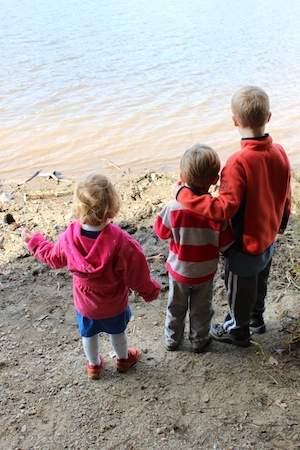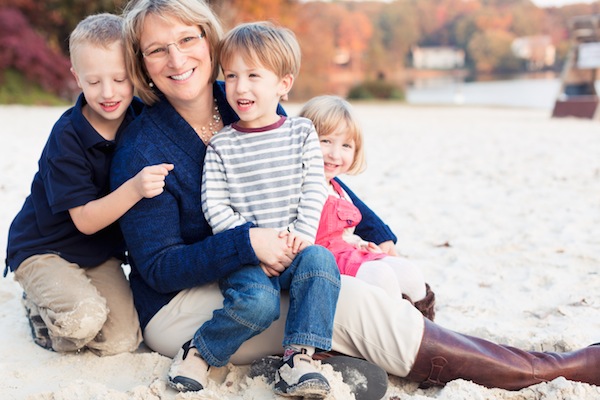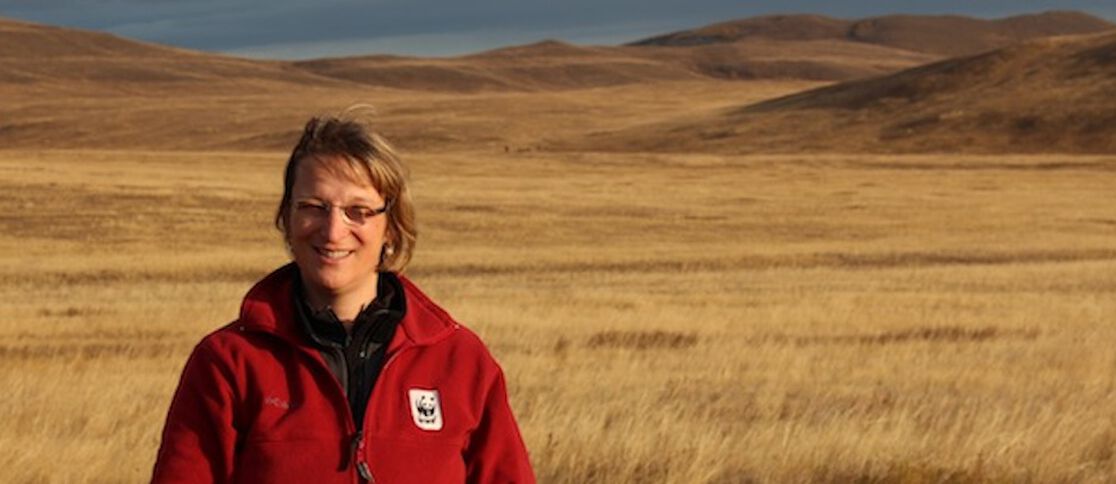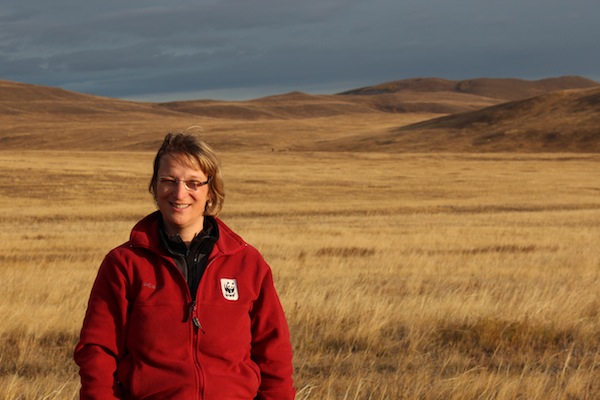When I was a little girl growing up in Germany, I always knew I wanted to help animals in a big way. As Managing Director of Species Conservation at World Wildlife Fund, I get to see my dream come true by leading programs and initiatives to help build a future for the magnificent yet threatened animals of our planet – elephants, rhinos, tigers, and gorillas to name a few.
And now that I am a grownup, and a parent, I want to instill that same appreciation for nature and the passion to do something good for animals in my children that I experienced as a child (and continue to experience in my day job). Young people are the future of conservation – we must inspire them and we must lead them by our example.
 As a mom, there’s nothing I enjoy more than spending time with my three-year-old twins and six-year-old son. And as most mothers of young kids know, our little rug rats like to get dirty! So my first tip to get young children involved with the conservation movement is to get them outside and dig in the dirt. Nowadays, too much time is spent indoors playing on the computer or watching TV. So the best thing to do as a parent is to get your kids outside – take them on mini hikes or nature walks and dig in the dirt looking for earthworms or cool looking rocks and leaves. If you live in the city, take them for a walk around your neighborhood and point out the breeze they feel on their faces, the color of the sky they see, and even the scents they smell. This way, they will start to develop a sense of the natural world around them.
As a mom, there’s nothing I enjoy more than spending time with my three-year-old twins and six-year-old son. And as most mothers of young kids know, our little rug rats like to get dirty! So my first tip to get young children involved with the conservation movement is to get them outside and dig in the dirt. Nowadays, too much time is spent indoors playing on the computer or watching TV. So the best thing to do as a parent is to get your kids outside – take them on mini hikes or nature walks and dig in the dirt looking for earthworms or cool looking rocks and leaves. If you live in the city, take them for a walk around your neighborhood and point out the breeze they feel on their faces, the color of the sky they see, and even the scents they smell. This way, they will start to develop a sense of the natural world around them.
My second tip is to make a compost pile in your backyard and talk about the Earth’s recycling process. Explain to your children the importance of giving back to the Earth, and how everything – from the food we eat to the electricity we use – is all connected. Don’t be intimidated by science (or even if you think you don’t know much about composting or recycling), there are countless resources available to you to brush up on this issue. Check out WWF’s website to get some additional green tips and information on what you can do at home. Additionally, this cool video about the impacts of our everyday cotton t-shirt illuminates how everything is all connected. And again, if you live in the city, make sure you use those blue recycling bins – ask your apartment complex to give you your own bin and explain the significance of this bin to your child.
Speaking of food, try to buy (or even grow yourself!) locally grown produce – my third tip of the day. Living in Washington, DC, I am able to take my kids to one of the many farmers’ markets that spring up each weekend. As we walk through the aisles and see the different reds of tomatoes or the greens of lettuce and cucumbers, I tell my kids about the importance of eating locally grown food along with how much food we should be eating, and explain how these seemingly small, simple choices can save precious habitat for the animals (and even people) of our planet.
A fourth tip that I use all the time with my children is to talk about the bathroom! That’s right, all kids love to talk about the potty. And I use that to my advantage. Explain to them that the choices we make at the store (what toilet paper we buy, how much we use) affects tigers, rhinos, and elephants. Did you know that certain types of paper cause rainforest destruction (critical tiger habitat)? So, when buying toilet paper, paper towels and other tissue products, buy sustainably-sourced paper products. Look for either 100% recycled content or FSC-certified tissue. And caution your kids to be careful with how much toilet paper they use when they go to the bathroom.
[caption id="attachment_4484" align="aligncenter" width="600"] Image by Jody McKitrick.[/caption]
Image by Jody McKitrick.[/caption]
Another activity that I use at my disposal to get my children interested in conservation, and as my fifth and final tip, is to share photos and stories from my trips and talk about the animals that mommy is saving. Children like nothing better than to get a bedtime story read to them from mom or dad (or grandma, grandpa, aunt, uncle, friend) and even better if the story involves charismatic animals. I have the benefit of sharing personal stories from far off places like the savannahs and jungles of Africa to the forests of Indonesia – but stories don’t necessarily need to be told in the first person. Go to your local library with your kids and check out books on animals. Also, if you are of the technology-adept generation and have an iPad, download WWF’s Together iPad App – which provides in-depth, interactive stories (and more!) of endangered animals, including giant pandas, tigers, elephants, marine turtles, polar bears and others.
Do you have any questions about conservation? Let us know in the comments and Dr. Klenzendorf will answer them next week in an Honest Q&A.
- Dr. Sybille Klenzendorf
This post is in partnership with WWF to celebrate Earth Day and support their conservation efforts to protect vulnerable animals and their habitats around the world. Dr. Sybille Klenzendorf is WWF’s Managing Director of Species Conservation. More information on Dr. Klenzendorf can be found at: https://worldwildlife.org/experts/sybille-klenzendorf.
We aim to provide you with the most honest and credible information possible. This article was reviewed for accuracy by The Honest Team and was written based on sources that are linked at the bottom of the article.
blog_review_statement




